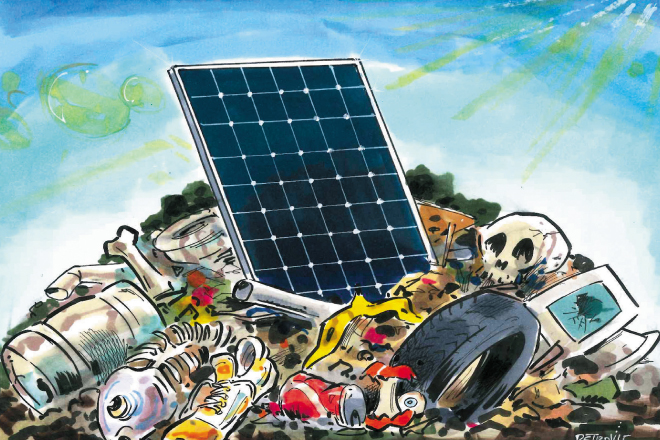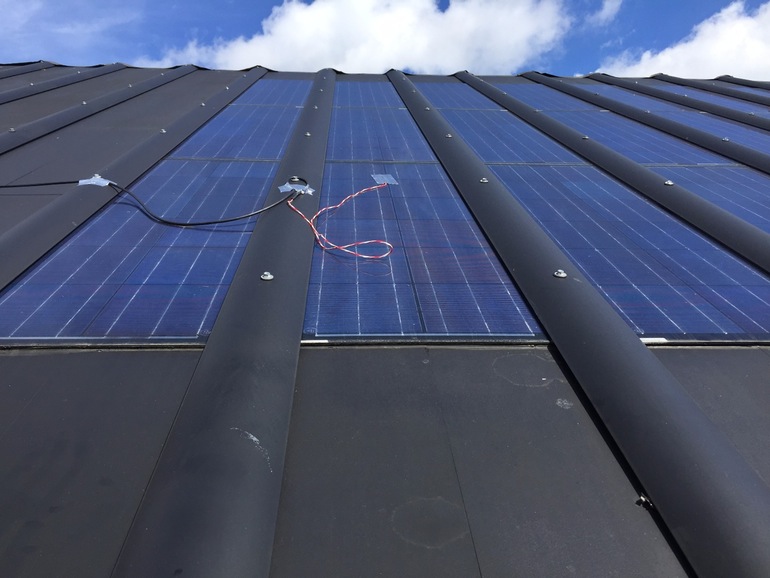Solar panels are a source of toxic e-waste, experts say

It is believed that alternative energy , including solar panels, is much “cleaner” than the traditional one. All these thermal power plants, nuclear power plants pose a certain risk to the environment. Experts from the nonprofit organization Environmental Progress (EP) argue that photocells are also not as good as it is commonly believed. The other day, published the results of research conducted by EP, which states that solar panels - a source of hazardous waste containing a large number of elements such as lead, chromium, cadmium. At the same time, failed photo cells are sent to landfill without proper disposal, where nobody controls the process of their destruction.
For the sake of fairness, it must be said that this organization itself advocates a more active use of nuclear power plants for energy. Environmental Progress (EP) does not disclose funding sources. The head of the organization believes that a lot is said about the dangers of nuclear power plants, but nobody knows how dangerous photo cells can be. “We often discuss the dangers of nuclear waste, but they are carefully monitored, everything is clearly regulated,” said Michael Shellenberger, head of the EP.
He also argues that no one is following what happens to solar panels after they are dumped, control over the spread of "solar waste" simply does not exist. “We had no idea that there could be so many panels in the world - a huge number of them - which would lead to environmental damage,” says the head of the EP.
His colleagues, who helped carry out the research, say that in India or China, hazardous waste that was previously electronic devices is simply incinerated. Including, photocells are burnt. The process of combustion of "electronic debris" is accompanied by the release into the atmosphere of a large amount of harmful substances, most of which are carcinogenic, they can not be inhaled. But due to atmospheric emissions, these substances enter the body of a large number of people, which leads to an increase in the number of oncological diseases and general diseases of the respiratory organs.
Representatives of the EP declare that photocells are not at all harmless pieces of glass and plastic, they are made of various materials. The complexity of their design leads to the fact that almost no one undertakes to recycle solar batteries. But this should be done, since the production of photovoltaic cells is growing, a large number of solar batteries are already nearing the end of their service life, which means that “solar waste” will soon become even more. Japan is one of the first countries that are trying to establish a process for recycling photovoltaic cells. In 2020, the mass of this electronic waste will exceed 10,000 tons, by the end of 2040 - 800,000 tons. It is difficult to find a suitable solution, since the recycling of batteries, as mentioned above, is difficult (and expensive), but the result is minimal, because a new product made from recycled material is very cheap.
In addition to Japan, solar panels, or rather, their processing is a problem for the United States, where there are 1.4 million systems for converting sunlight into electricity. Germany and other European countries also have accumulated significant amounts of photovoltaic cells. The government, both central and regional, urgently needs to tackle the issue in order to prevent the occurrence of danger in the future. In the EP, it is estimated that households with solar cells supply 30-60% more "e-waste" more than households without photocells. According to experts of the organization, the "most" will be the most vulnerable people in the poorest countries.

And waste is not everything. The production of photovoltaic cells is also not the most environmentally friendly process. Solid waste, pollution of the hydrosphere and atmosphere in the case of the production of solar panels - a common thing.
According to representatives of the EP, some supporters of alternative energy are mistaken when they say that humanity can switch to renewable sources and never return to coal, oil, uranium. Thus, the study of the organization criticizes the point of view of Mark Jacobson, a professor from Stanford, who believes that the United States can receive energy only from renewable sources as early as 2050. EP experts claim that there are a number of errors in his work, including incorrect models that are the basis of the study.
The findings of the study are quite interesting:
- Solar panels are a source of waste, 300 times more toxic than nuclear power plants;
- If we calculate the volumes of waste from nuclear power plants and solar farms, then after 25 years, if we place this waste on a football field, in the first case their height will reach a height of 52 meters, in the second - 16 km;
- Countries like Ghana, India and China, where many communities live off e-waste, will suffer from “solar debris” much more than countries that use solar cells.
In general, the study itself, as far as can be judged, is quite subjective, and the conclusions are somewhat strange. But the fact that any types of electronic waste must be controlled, including photocells, the authors of the work are right.
